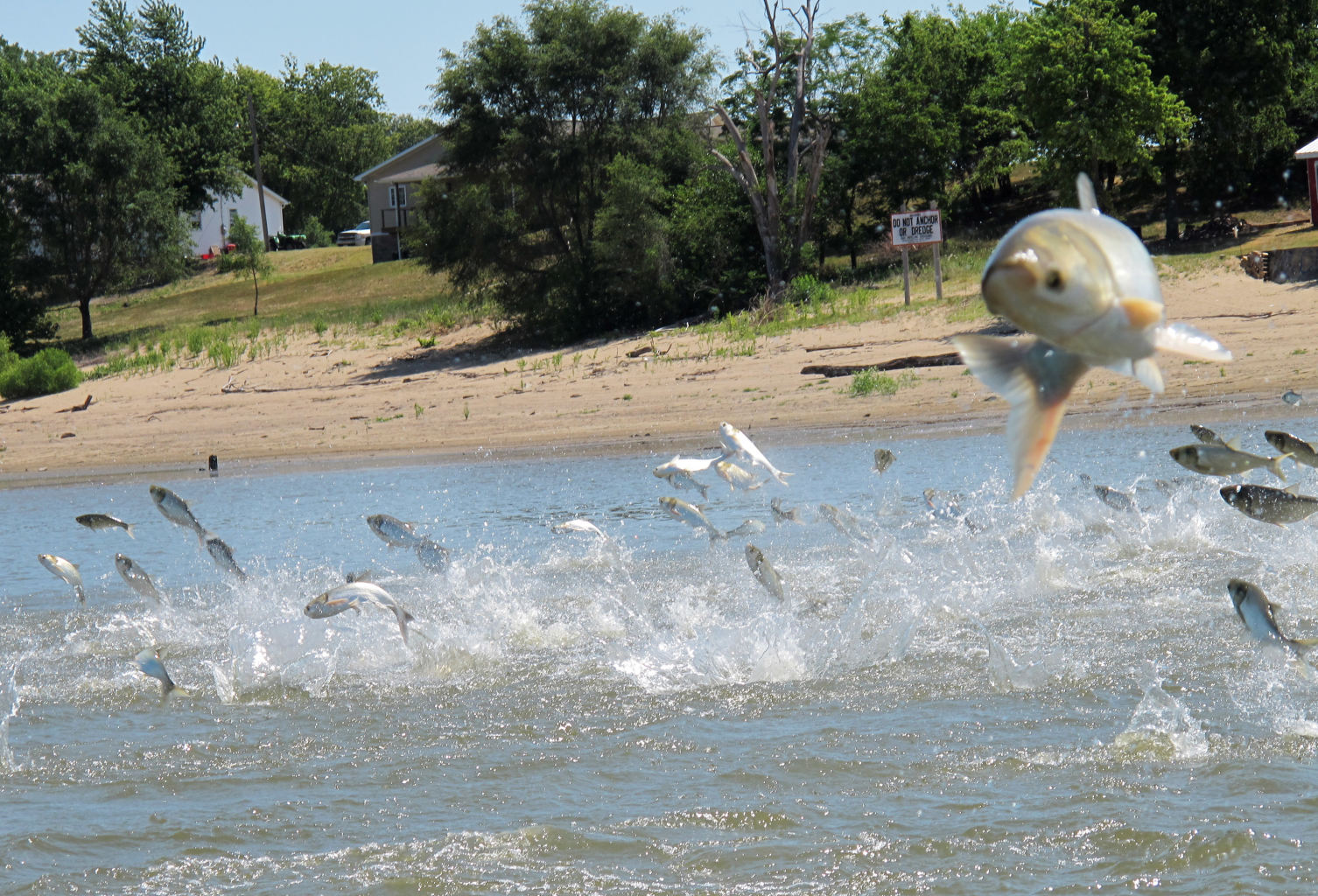Asian carp spawning areas wider than expected - Asian carp spawn in more river areas than previously known, showing their adaptability - Asian carp are reproducing in more places and under more varied conditions than experts had believed they could, yet another reason to worry about the greedy invader's potential to infest waterways and crowd out native species, scientists said Tuesday.
Several varieties of carp imported from Asia have migrated steadily northward in the Mississippi River and its tributaries since escaping from Southern fish farms and sewage treatment ponds in the 1970s. They've been spotted in more than two dozen states. Bighead and silver carp gobble enormous volumes of plankton, a crucial link in the aquatic food chain, while silver carp sometimes collide with boaters by hurtling from the water when startled.

In this June 13, 2012, photo, Asian carp, jolted by an electric current from a research boat, jump from the Illinois River near Havana, Ill. Asian carp are reproducing in more places and under more varied conditions than experts had believed they could, yet another reason to worry about the greedy invader's potential to infest waterways and crowd out native species, scientists said Tuesday, March 19, 2013. (AP Photo/John Flesher)
Research based largely on data from their homeland has indicated the carp can spawn successfully only under the right circumstances, including temperatures of about 70 degrees and long stretches of continuously flowing water where fertilized eggs can drift while incubating. But a study led by Reuben Goforth of Purdue University has found their eggs in places that previously were considered unsuitable.
"We need to recognize that these species have greater flexibility ... than perhaps we originally thought, so we probably need to be prepared for them to become established in a wider range of ecosystems than we originally expected," Goforth said in a telephone interview.
The findings are particularly sobering for the Great Lakes, where scientists say the carp could threaten the $7 billion fishing industry if they spread widely. None are known to have reached the lakes, although their DNA has been found in Lake Erie and in Chicago waterways a short distance from Lake Michigan. A federal study last year identified three rivers that flow into Lake Erie as good candidates for Asian carp nurseries.
Goforth, an assistant professor of forestry and natural resources, said he and his colleagues focused their study on the Wabash River in Indiana. Authorities have built a fence in the Fort Wayne area to prevent the carp from migrating from the Wabash to the headwaters of the Maumee River, a Lake Erie tributary regarded as ideal spawning habitat.
The Purdue team, assisted by the Indiana Department of Natural Resources and the U.S. Geological Survey, collected water samples containing Asian carp eggs in 2011 from sections of the river that were much shallower and narrower than had been considered necessary for spawning, Goforth said. Some were found 50 miles upstream from known spawning areas.
Another surprise was the discovery of drifting eggs as late as September, contrary to previous belief that the spawning season ends in July.
"What's particularly interesting to me is that they're showing more flexibility here than in their native range," Goforth said. Ironically, while Asian carp are spreading rapidly in the U.S., they're declining in China, where dam projects are reducing their habitat.
Further research is needed to determine whether eggs laid in more remote stretches of the river are surviving to adulthood, he said.
Duane Chapman, a USGS research fisheries biologist and Asian carp expert who didn't participate in the Purdue study, said the new findings were important because Asian carp have been widely regarded as "large river spawners."
The Wabash is "probably the smallest river in which we are aware of Asian carp spawning," Chapman said. "One of the big questions we're dealing with, particularly in the Great Lakes, is which tributaries might be potential spawning sites or what reservoirs are potentially at risk ... and how far upriver it goes." ( Associated Press )
Blog : Live Old Memories
No comments:
Post a Comment